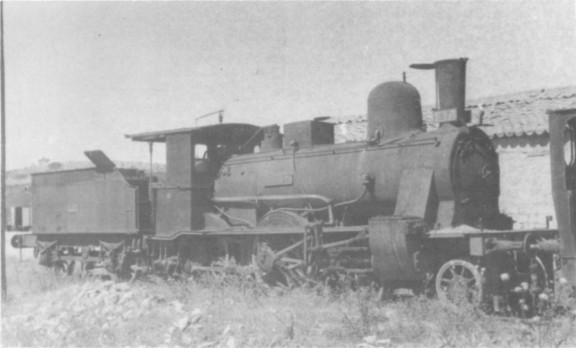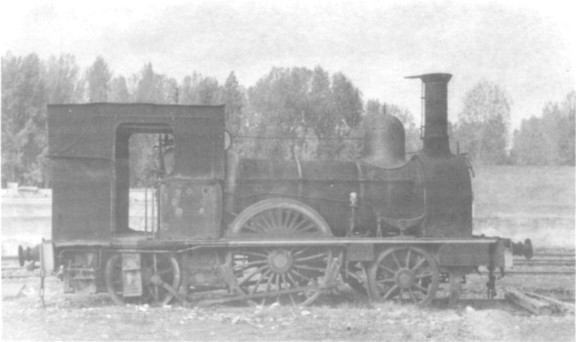
| THE INDUSTRIAL RAILWAY RECORD |
© APRIL 1969 |
PICTURE PARADE
RON FRASER
ERCILLA was constructed at Chemnitz (Sächsische Maschinenfabrik Works No.1255 of 1883) as one of a class of twenty-four locomotives introduced in 1882 by the Compañía de los Ferrocarriles de Asturias, Galicia y León. The AGL itself had been formed only in 1880 in an attempt to co−ordinate the development of various nascent schemes in this part of Spain, but by 1885 it had been absorbed into the well-established Norte system. Thus the 4−4−0’s became Norte property, numbered 71−94, and ERCILLA still retains its Norte number ‘87’ on plates affixed to the chimney in traditional Spanish fashion. The 4−4−0 wheel arrangement was not too common in Spain, possibly because it arrived on the scene at a time when money was scarce and the railway companies had to rely on their earlier 2−4−0’s until better days, by which time larger and more powerful locomotives were available as replacements. However, although the type was not perpetuated, the Norte must have been very satisfied with the 4−4−0’s inherited from the AGL in view of their long life. Little has been recorded of their work, but by the later 1920’s they were still working passenger trains to the border at Irun, and along the Ebro Valley from Miranda to Zaragoza. Nine of the class survived long enough to be taken into RENFE stock as Series 220−2011 to 220−2019, but by 1955 all had been withdrawn. ERCILLA had been withdrawn and sold by the Norte (at an unknown date) to Ebro-Compañía de Azucares y Alcholes, S.A., who used it at their sugar factory at Toro in the province of Zamora. The photograph taken in September 1964 shows the locomotive out of use at the factory. The leading dimensions are: cylinders 430mm x 570mm; Driving wheels 1550mm diameter. Weight in working order (locomotive only) - 39.7 metric tons.

It was almost unbelievable to hear as late as 1965 that still there existed in Spain a locomotive of the 2−2−2 wheel arrangement (apart from the replica of MATARO) - and in industrial service at that!! No doubt it would have been discovered earlier but for the fact that it is located off the beaten track at Aranda de Duero, at the sugar factory operated by Compañía Industrial Azucarera, S.A. Enquiries at the factory revealed that this unusual locomotive arrived about 1942, having worked previously at a similar establishment in the Ebro valley at Alfaro. Señor Gustavo Reder (of Madrid) has confirmed the existence of the locomotive at Alfaro in the 1920’s, but his records indicate that only two tank locomotives of the 2−2−2 type had ever worked in Spain; these were supplied by John Jones of Newton-le-Willows, Lancashire who is believed to have completed some of the orders given to the firm of Jones & Potts in 1862-1864. These worked originally on the Tardienta-Huesca Railway (opened 12th September 1864), possibly being used firstly by the contractor for the construction of the line, and later became Zaragoza-Barcelona Railway 1T and 2T. Later, on absorption of the ZB, they were taken into Norte stock, and according to official records it was scrapped in 1884; 2T is recorded as being used as a stationary boiler at Miranda de Ebro shed until 1895 before being laid aside, although not officially withdrawn until 1910. This is where the last piece fits into the jigsaw - the sugar factory at Alfaro was opened in 1910, adjacent to the Norte station, and to whom would such an establishment enquire for motive power? What an opportunity for the Norte to dispose of a long-redundant locomotive! That the locomotive was still in active service more than 50 years later is almost incredible; it last worked in 1962 and will not work again, but it is hoped that this most interesting machine will not be allowed to go to the scrapheap.
